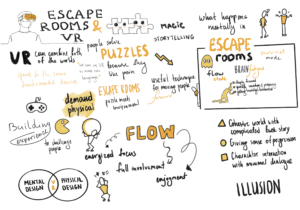When I was a child, I was a big fan of various video games. I remember playing “Sonic”, my favorite game of my childhood, on Sega. It was before we get access to computers and the internet. I was born in Kyrgyz Republic, one of the developing countries of Central Asia, where not everybody could have computers in their houses. As a result, computer clubs became such a prominent part of our “culture” that children would remain and play video games there all night. I was among those children who loved to spend their money on computer games. Other than this, I am sure there are a couple of moments from my childhood that many others can relate to. With the development of button cell phones, all my interests transitioned into mobile games. I remember asking my father to let me play “Snake” on his old Nokia “brick.” I remember both the frustration and the delight I had while playing this simple but immensely captivating game. Actually, Snake was my real introduction to tech and the world of mobile phones/games. My level of interest in mobile gaming increased in direct proportion to the progression of the industry. Then, all of a sudden, I lost interest in games because I thought they were a waste of time.
Before this class, I didn’t even have a single game on either my phone or my PC. I had the preconceived notion that games were a distraction, that they did not provide any vital information, and that all they did was get us addicted. Nevertheless, the concept of game design, game design thinking, and gamification piqued my curiosity since they seemed creative and engaging. Therefore, I eagerly decided to take the “Design for Play” ( CS 257G) course to satisfy my curiosity.

My team for Project 2 “Dorm Break”
It was the first time when I had so many assignments in a single class, but I enjoyed working on them. Thanks to the sketch-noting assignments, I became confident in drawing on Procreate and delivering my thoughts and ideas through visuals. Thanks to Critical Play, I looked at games from a different perspective, and I learned to think critically. Since we were performing Critical Plays every week, mechanics, types of fun, and formal elements really stuck with me. Moreover, now I have a bunch of games on my iPad and phone that I play and analyze during my leisure time. This class truly changed my perception of games and became one of my favorite classes here at Stanford. Now I like not only playing games but also designing them.
Besides those assignments, we had two projects during the quarter where we collaborated with other students. I am a very introverted person so it was challenging for me to integrate into new groups of people. I have this imposter syndrome that accompanies me everywhere so I always think that I do not suit a particular group. But I was lucky to have people who were very responsible, initiative, and creative. We created engaging games, playtested, and packed them. Those two projects gave me totally different experiences because for the first project we created a social game similar to Pictionary games, while the second project forced us to think broadly, create puzzles, and design settings for the game. Eventually, I realized that I love creating puzzle games by putting some meaning into them, and connecting dots.
The readings and videos were other wonderful aspects of this class. I even had a chance to use the MDA Framework in the analysis of Minecraft Education for another class. I liked reading and watching about the formal elements of games, Game Architecture, Narrative Architecture, Puzzles, etc.

One of my sketchnotes
The research area of my interest here at Stanford is children with disabilities, particularly those with visual impairment and blindness. Therefore, next time, when working on games, I would like to focus on the accessibility part. I remember how during the quarter I tried to search for video games for visually impaired and blind people. I found “The Vale”, an audio-based action-adventure game that places you in the worn leather boots of a blind adventurer. I discovered that decreasing visual perception and boosting auditory interaction might be an effective option for different types of accessible games.
Thank you for this amazing class!


